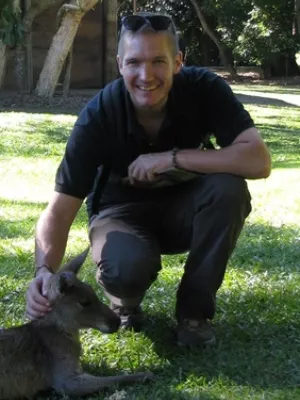
Paul Caplat
Forskare

Avifauna trends following changes in a Mediterranean upland pastoral system
Författare
Summary, in English
Understanding the relationships between biodiversity and land-use is a key element for the development of effective conservation strategies. We studied a mid-altitude steppe-like area of Southern France, the Causse de Sauveterre, that has been grazed for many centuries. The decrease of human population during the 20th century, particularly since the end of 2nd World War, and the ongoing changes in agricultural practices may have dramatic effects on many biodiversity components of these landscapes. Our study assesses landscape change and modifications in bird community composition through the repeated sampling of a network of sites after an interval of 15-19 years. We paid particular attention to the possible consequences of recent changes in agricultural policy on these communities. Landscape changes were studied through remote sensing, and bird community and vegetation changes by field sampling on 183 sites. Correspondence Analysis showed an overall trend towards landscape closure. This results in a decrease of open-habitat species that are fairly rare in Europe (e.g. Tawny Pipit Anthus campestris, Linnet Carduelis cannabina, Ortolan Bunting Emberiza hortulana), and in an increase of common forest species (e.g. the Common Chiffchaff Phylloscopus collybita and Winter Wren Troglodytes troglodytes). Although most of the avifauna changes seem to be explained by local landscape changes, the decrease of certain bird species as Bullfinch Pyrrhula pyrrhula and Citril Finch Serinus citrinella may result from population changes at larger scales. The current closure of the landscape represents a threat for several steppe species whose conservation status is unfavourable in Europe. This closure does not result from a decrease in human population and/or in flock number, as observed in many Mediterranean hinterlands. It rather results from a shift from a former extensive pastoralism, where sheep grazed steppe-like grasslands (rangeland grazing), towards a more intensive herding that use hay and cereal foodstocks cultivated on the more productive areas of the farms. To alleviate the observed trends, subsidies should be oriented towards the compensation of a possible loss of income resulting from the maintenance of the traditional extensive pastoralism.
Publiceringsår
2010-05-15
Språk
Engelska
Sidor
337-347
Publikation/Tidskrift/Serie
Agriculture, Ecosystems & Environment
Volym
137
Issue
3-4
Dokumenttyp
Artikel i tidskrift
Förlag
Elsevier
Ämne
- Ecology
- Zoology
Nyckelord
- Agricultural intensification
- Bird community
- Extensive pastoralism
- Land-use change
- Landscape
Status
Published
ISBN/ISSN/Övrigt
- ISSN: 0167-8809